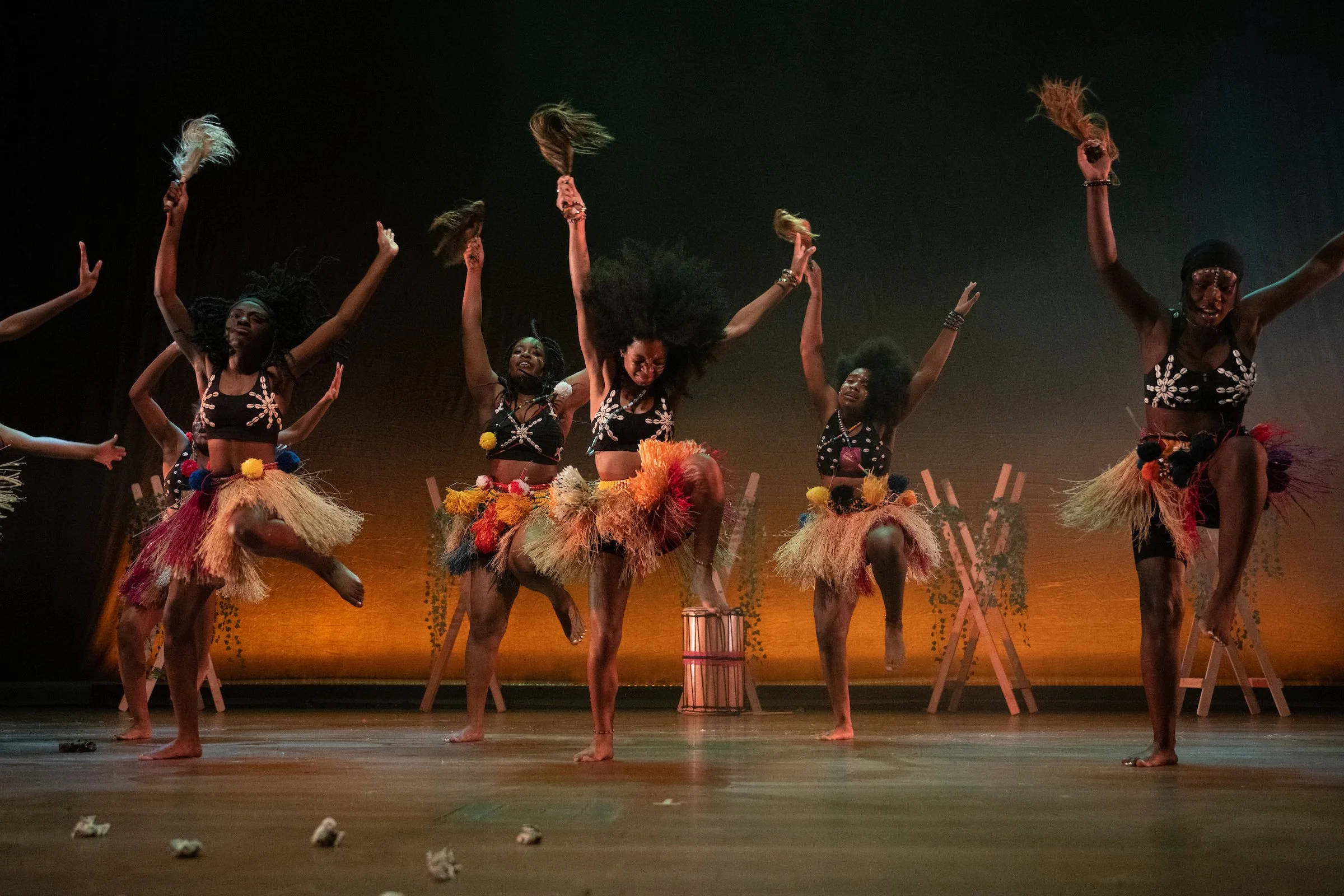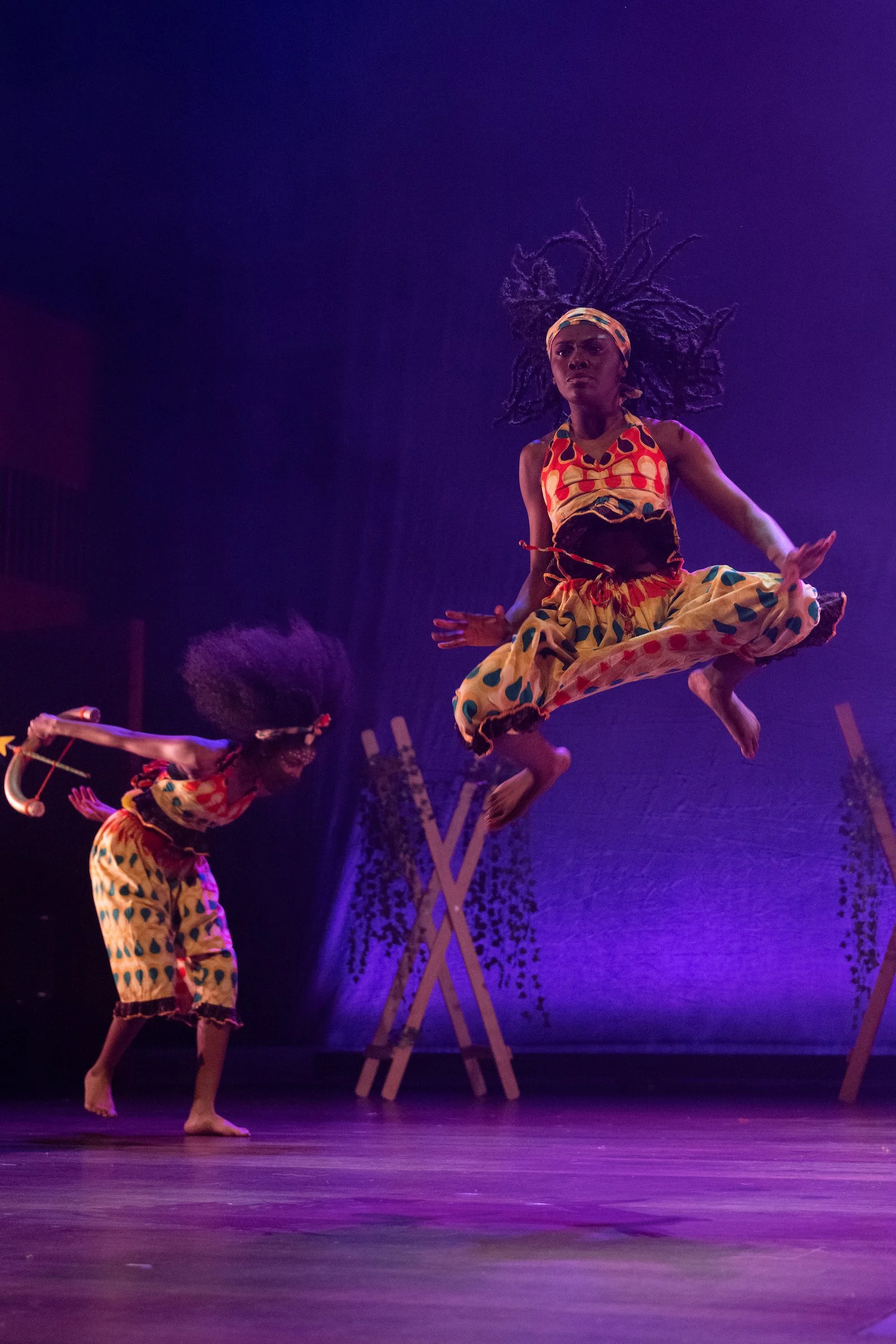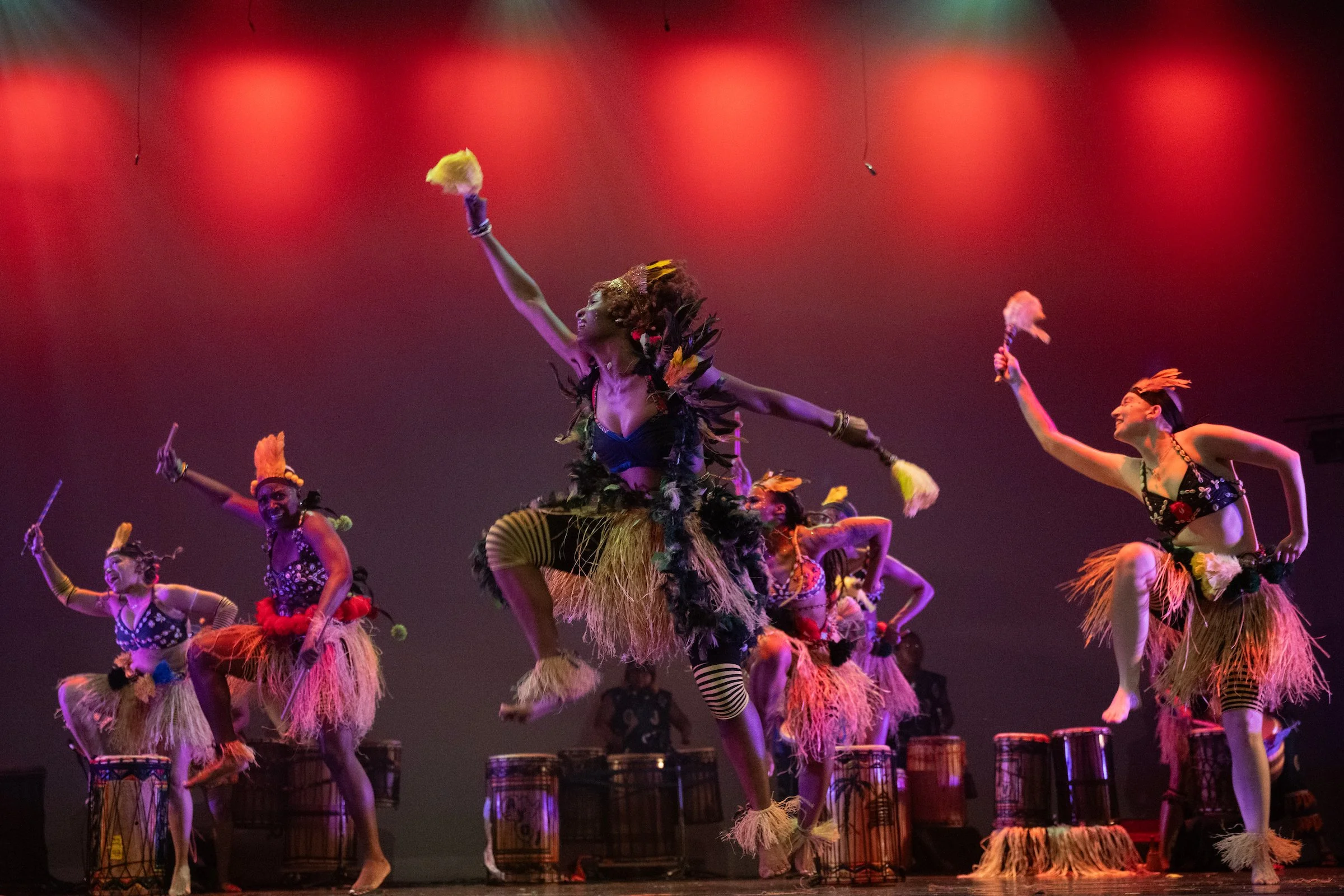Dance Center Artistic Director Meredith Sutton sat down with Ayodele Drum and Dance Founding Executive/Artistic Director and Columbia faculty member T. Ayo Alston to talk about BEAUTY AND THE BEAT: MASKED as part of Season 52.
Meredith Sutton: What’s on the horizon for Ayodele Drum and Dance as you’re bringing the company back to the Dance Center?
T. Ayo Alston: We just had three new company members sign contracts for the season. The intensive this past summer to help with building stamina and technique in seven days was amazing. Everyone pushed really hard; we worked really hard with a teacher from Mali named Souleymane Solo Sana and he put some choreography on the company as well.
Meredith: With the addition of the three new company members how many dancers and percussionists does the company now house?
Ayo: We have between 25 and 28 members that are dance participants and drum participants.
Meredith: What are some of the things that the company will be experimenting with during the production residency? What are you imagining or dreaming for that time?
Ayo: For the production residency, just thinking about how to collaborate with the lighting and tech people where their vision and their creativity can intertwine with what my vision is for the work that will be presented. How can we create the theater space to make the magic on top of the dancing and singing and drumming?
Meredith: The company is pretty accustomed to performing in large venues. The company is large; the following is large. What do you think will be some additional spatial considerations being at the Dance Center? There’s a different connection with the performing artists and the audience, there’s a different proximity. What lightbulbs is that turning on for you?
Ayo: Because we’re usually in larger spaces for concert material, with such an intimate space, we can have the audience feeling like they are a part of the performance.
Meredith: Catching onto that energetic vibe from the company does not take much. I have no doubt that the audience will be fully connected to what you are sharing. I really look forward to that. Can you share any inspirations behind the work that’s going to be presented? Are there certain themes or questions that are being explored?
Ayo: I recently did some training with Merveilles de Guinée which is in Guinea, West Africa and a couple of the teachers worked with me with some vocabulary for new work. We’ll be doing that as a drum piece. It’s Halloween weekend so we are collecting our repertoire of masquerade pieces of different ethnic groups and different countries in Africa. Zaouli comes from Côte d'Ivoire (Ivory Coast). When we first presented this form, the decision was how can we combine this with Chicago Footwork. We’re bringing it back for this. That bridge, you know showing people those similarities between cultures and how those align.
“The company is very colorful in ethnicities, in age and size. It continues to expose audiences to seeing more of themselves than less. A lot of time you’ll go to dance shows, you don’t really see people in a certain weight range or certain age range. Being able to see that variety and that kaleidoscope of perspective from an audience lens, I feel like that continues to take the company to the next level. ”
Meredith: What do you hope that audiences will take away from experiencing this offering?
Ayo: Knowledge about the similarities that we have to people of different cultures and different practices. Knowledge of the different ethnic groups and of some of the different masks that exist and what they represent. Giving people some dance education some movement education and allowing people to be exposed to African dance. Overall fun. People being able to just have fun.
Meredith: Your work and presence are multifaceted at the Dance Center from a pedagogical perspective and from what you do artistically with the company. How is this adding to the lineage and legacy of what the company sets out to do?
Ayo: The mission of the company is to foster community from the feminine perspective through the study and performance of diasporic African music and dance. Overall, it is just continuing to build community, continuing to share with community, continuing to bridge gaps in understanding of African dance. The company is very colorful in ethnicities, in age and size. It continues to expose audiences to seeing more of themselves than less. A lot of time you’ll go to dance shows, you don’t really see people in a certain weight range or certain age range. Being able to see that variety and that kaleidoscope of perspective from an audience lens, I feel like that continues to take the company to the next level. At the end of the day, it’s not really how I feel about the outcome but how it makes people feel when they watch.
Meredith: Once it’s out there it is no longer ours, right? I love the description of the company as a kaleidoscope. It is intergenerational. It is pluralistic. It is truly a space of belonging for any and everybody that wants to contribute to that energy, to that conjuring. I’m excited for how audiences will connect on many levels to the work. Is there anything that you’d like to share that you think is important to communicate about Ayodele and where you are right now?
Ayo: I have worked to codify and preserve West African dance culture as a technical form of dance in higher education. I think doing this performance at Columbia will continue to attract more dancers that want to study and add African Dance as a foundational part of their practice. Ayodele offers jobs and employment for dancers that are coming out of college to train and make money while they’re training. I am hoping that it does trigger and spark interest in dancers to add to their dance vocabulary and potentially also find a home with the Ayodele community for their dance training.
Meredith: Thanks so much, Mama Ayo.




